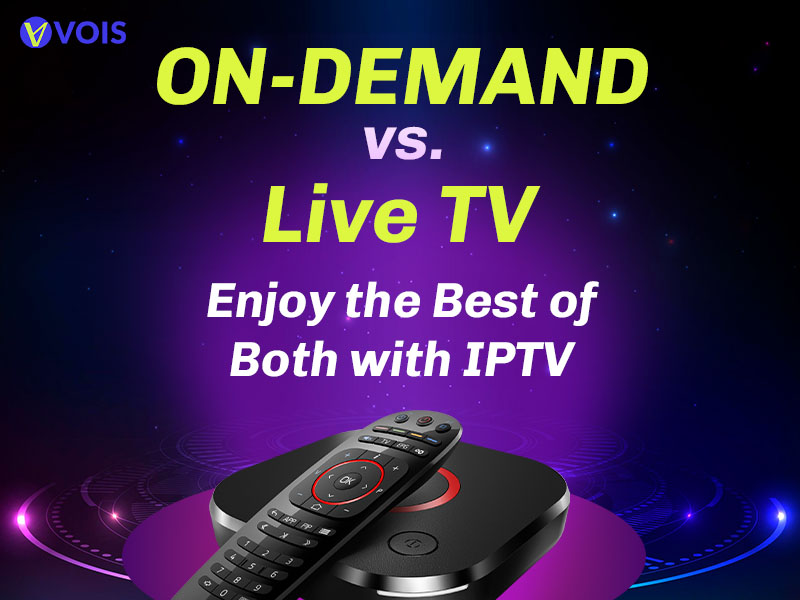
People once sat in front of a screen, waiting for a program to begin at a set time. Scheduled broadcasts shaped the way families watched TV. Now, people choose when and how to watch. On-demand streaming has made that possible. Live TV still plays an important role, especially for sports and news. Internet Protocol Television (IPTV) helps combine both viewing styles. This offers more control and variety to anyone who watches.
On-demand TV lets viewers choose what to watch and when to watch it. No fixed schedules. No need to wait. It works by storing content on servers, ready to stream when someone clicks play. People can watch series, movies, or documentaries at any hour of the day.
Viewers pause, rewind, or fast forward. Commercials? Often skipped. The library grows fast. Old shows, new releases, and niche content stay available. This helps meet different tastes.
Live events do not appear instantly. Sports games or breaking news won’t show up until later. There’s also less excitement since the real-time factor is missing.
Live TV means content plays in real time. It mimics traditional broadcasts but works over the internet. News, talk shows, and sports air as they happen. No delay.
Live TV connects people to real-world events. Watching a final game live builds excitement. Staying updated with news or weather helps in everyday decisions. Live streaming delivers that immediacy.
Fixed times still apply. Missed a show? It may not be available again. Also, ads appear often and can’t always be skipped. Schedules don’t always match daily life.
IPTV delivers content over the internet through managed networks. Unlike cable or satellite, IPTV uses data transmission to stream media. It supports both live broadcasts and on-demand libraries.
Viewers get both real-time shows and flexible playback. Some IPTV platforms add features like pause-and-play during live broadcasts. Personalized suggestions appear based on watching habits. Quality often stays high, even on slower networks.
IPTV merges flexibility with immediacy. People no longer choose between now and later—they get both.
Most platforms charge monthly or per show. Pricing varies by content type and brand. Some keep ads while others offer ad-free tiers at a higher rate.
Live streaming platforms charge higher rates to cover licensing and real-time delivery. Add-ons like sports or premium Indian channels can raise the total cost.
Many IPTV providers offer tiered pricing. Basic IPTV packages often include both content types. Viewers pay less for more. Compared to standalone services, IPTV bundles help lower costs while increasing value.
OTT (Over-the-Top) services deliver content over the public internet. IPTV uses private or managed networks. Both use data but differ in structure and control.
IPTV ensures stable delivery through controlled networks. OTT relies on third-party internet providers. Quality on OTT may change with internet speed. IPTV keeps it steady.
IPTV supports better quality and fewer lags. It offers more custom control. OTT can work well but may drop during peak times. Device compatibility varies, but most IPTV services support modern TVs, phones, and tablets.
If news, sports, or reality shows matter more, live TV fits better. Those who prefer binge-watching or picking shows freely might enjoy on-demand more.
Some prefer skipping ads or controlling playback. Others want to stay connected to real-time events. IPTV offers both, making it a flexible choice for mixed preferences.
TV habits continue to shift. More users now expect custom control with fewer limits. IPTV services evolve fast, matching trends and adding smarter features every year.
Live TV delivers the present. On-demand brings convenience. IPTV brings both into one place. Choosing the right type depends on what someone watches and how they like to watch it. Voisiptv helps people stay in control while staying connected.